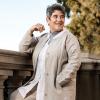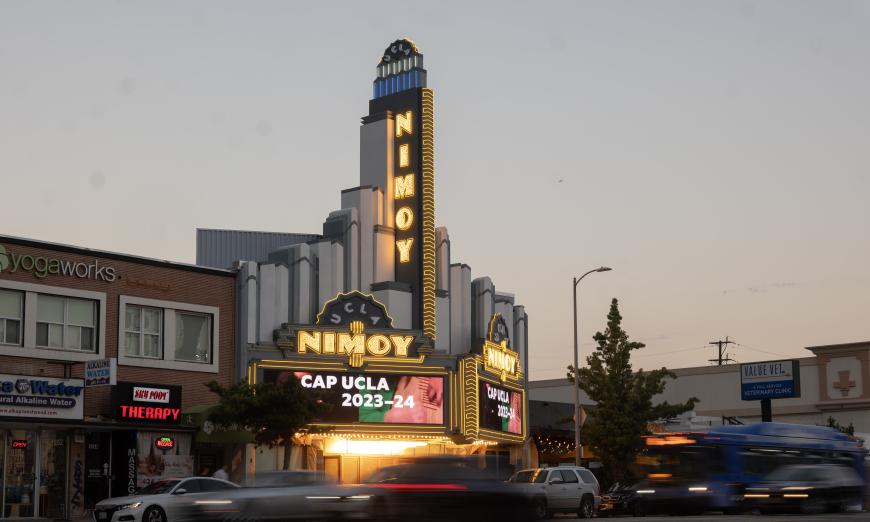
It began as a whim when Kristy Edmunds, who was then the executive and artistic director of UCLA’s Center for the Art of Performance (CAP UCLA), and her longtime education director, Meryl Friedman, were heading for lunch. They passed the Crest Theatre, on Westwood Boulevard just south of Wilshire. It was clearly in a desperate state.
“UCLA should buy that,” Edmunds said.
What began as an offhand observation set in motion a multiyear process that led to UCLA’s purchase of the theater in 2018 and will now culminate on Sept. 17 with a grand public unveiling of Los Angeles’s newest performance venue — The Nimoy.
It’s named for the late actor Leonard Nimoy (famous for his Star Trek role as Chief Science Officer Spock of the starship Enterprise) but also honors the part his widow Susan played as the new theater’s most enthusiastic patron. Fittingly, above the lobby doors in bold deco lettering is the Vulcan greeting associated with Mr. Spock — “live long and prosper.”
In the view of CAP UCLA’s new executive and artistic director, Edgar Miramontes, and co-programming directors, Friedman and Fred Frumberg, the opening of The Nimoy offers an opportunity to present a wide range of performances in an intimate 300-seat auditorium.
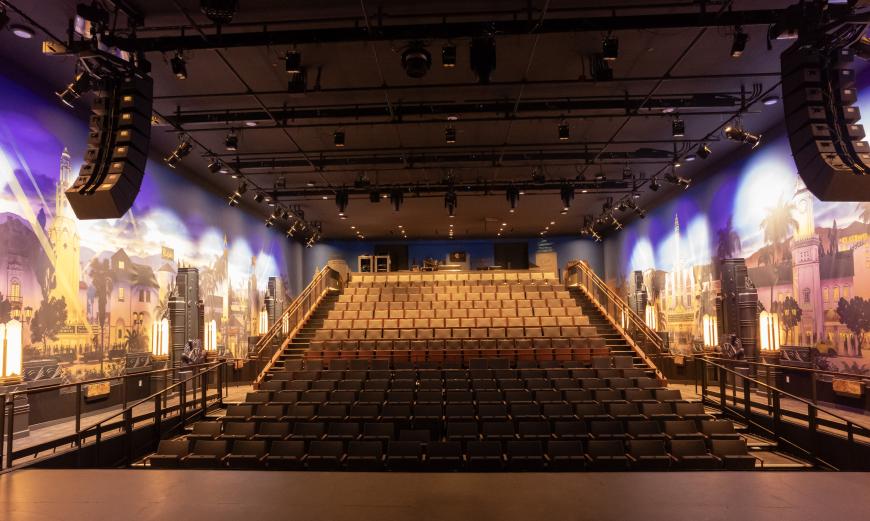
“The redesign of the theater [by BAR Architects & Interiors],” Friedman explained during a four-way Zoom get-together, “features 158 fixed seats on a series of eight permanent risers. An additional 150 seats can fold and collapse under the risers. The open space that creates can be set up with cafe tables or used for a dance floor, for standing room, or as a mosh pit.”
“Creating The Nimoy, “ Frumberg said, “offered us the chance to acquire a performance space that we did not have available on campus. It’s more intimate in scale for performers and audiences, and it means we can schedule groups that can attract 300 people but would not be able to fill the 1,800 seats of Royce Hall or the 1,200 seats of our other historic venue, The Theatre at Ace Hotel,” formerly United Artists’ flagship Alhambra Theatre, downtown on Broadway.
There was, however, a rather significant catch. When what would become The Nimoy originally opened in 1940, it was called the UCLAN. It had 500 seats and was used for live performances and screening art films.
Over the years the ownership changed hands multiple times. It was renamed the Crest Theatre. Then, in 1987, it was acquired by the Walt Disney Company, which undertook a major renovation involving a total (completely artificial) art deco face-lift: towering pilasters, imitation deco lamp fixtures, and the creation of a pair of panoramic cloth murals on each side of the auditorium, designed and painted by Disney scenic artist Bill Anderson.
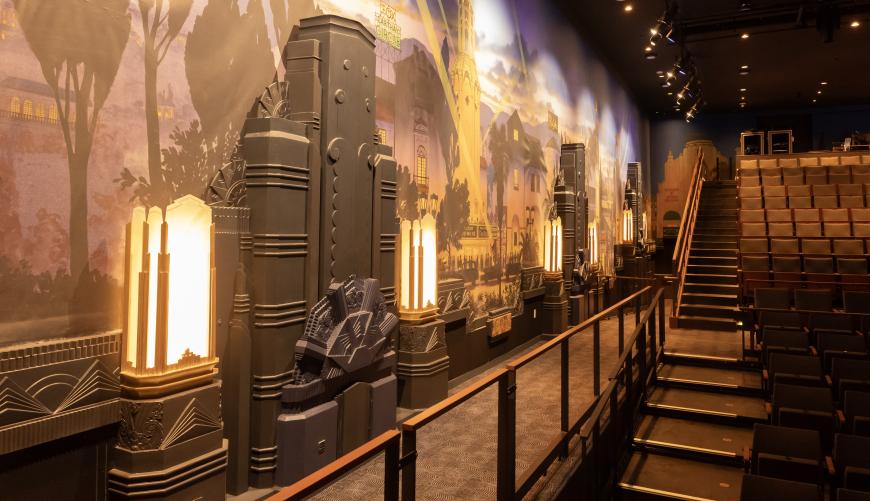
This highly stylized 1930s cityscape (which glows in the dark under black light) features landmark theaters like the Pantages and the Carthay Circle (where both Snow White and the Seven Dwarfs and Fantasia premiered), along with icons like the Brown Derby restaurant and the Hollywood sign.
Frumberg and Friedman said that during the process of transforming the theater, a lot of thought went into how much “historic preservation” Disney’s faux deco design deserved, murals included. The problem was, in the interim, the theater had somehow been designated a historic L.A. landmark.
“It seemed kind of hilarious,” Frumberg observed wryly, “to consider Disney’s architectural elements from the 1980s as historic. Nevertheless, one of the saving graces of being force-fed into keeping those murals — as good as they ended up looking after they were taken down and cleaned — is that they actually help with the acoustics.”
As Frumberg pointed out, The Nimoy was not designed to be a concert hall for classical music.
“A very small percentage of our programming is classical music,” he pointed out, “5 percent or less. And the type of classical music we tend to present, groups like Eighth Blackbird and Sō Percussion, they’re amplified, and we have a great sound system. It’s possible our classical music programming could change with Edgar coming on; we just don’t know yet.”
Frumberg is confident, however, that whatever trade-offs in the design were necessary, The Nimoy represents the best possible hall for the vast majority of CAP UCLA’s programming.
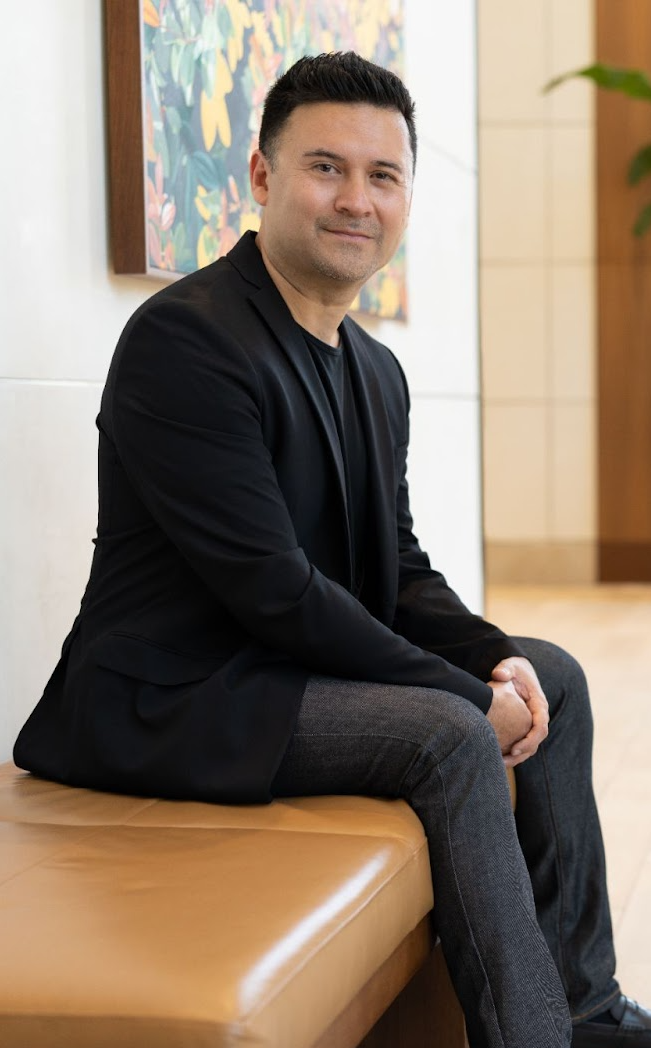
Between the time Edmunds first proposed acquiring the Crest Theatre and the space’s imminent reopening, the world changed completely. The pandemic raged, entire seasons were canceled, and in 2021, Edmunds was appointed director of the Massachusetts Museum of Contemporary Art. Friedman and Frumberg, who were tasked with programming the first season at The Nimoy, admit they’re still playing catch-up.
“It’s taken two seasons to really regain our footing and be able to present the artists we had contracts with that we couldn’t present during the pandemic,” Friedman explained. “The Nimoy was meant to open in March of this year. But because of COVID and supply chain and construction issues, 20 to 25 artists we’d made commitments to had to be canceled [a second time] and moved to the 2023–2024 season. Now, with The Nimoy opening, all those commitments have been fulfilled as part of the season to come.”
Looking ahead to the theater’s opening season and his new role as CAP UCLA’s executive and artistic director, Miramontes said, “As a result of the pandemic, the way audiences choose to attend the performing arts has significantly changed, and we’re all trying to adjust to that. But the truth is we really don’t know what that adjustment [will be]. The question all performing arts groups are facing is ‘How do we make our performances must-do events at a time when people have so many choices?’
“The Nimoy offers us a chance to present many different artists. Hopefully, some of these collaborations will provide an opportunity to develop new work that could potentially move into our larger venues.”
Clearly, for CAP UCLA and Miramontes, the upcoming season represents a transition. The full scope of his directorial vision may not become clear until the 2024–2025 season. The only hint he has offered is that he’s looking at presenting major artists and ensembles that represent the Pacific Rim.
Right now, it’s curtain going up.



